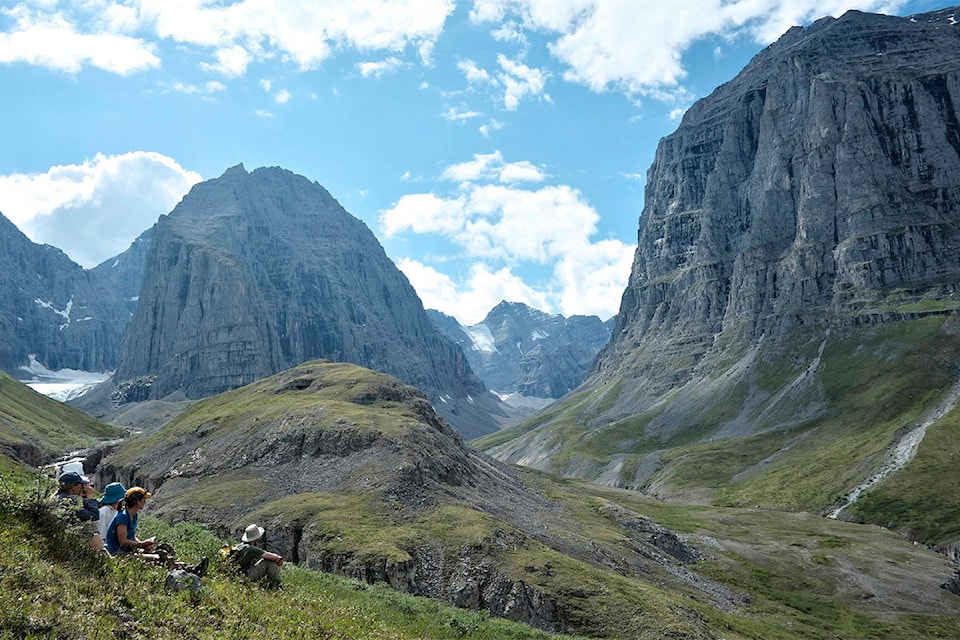Yukoners are now able to weigh-in on the Final Recommended Plan for the Peel watershed.
The public consultation period officially opened on Sept. 24.
The recommended plan, the same one that was first presented in July 2011 before the former territorial government tried to make substantial changes, separates the watershed into blocks, each of which has different stipulations.
Eighty per cent of the region is made up of a designated conservation area, which can broken down further: 55 per cent is to be permanently protected, whereas 25 per cent would be protected on an interim basis, subjected to review “from time to time.”
Sue Thomas, spokesperson from the Yukon Department of Energy, Mines and Resources, said these areas would be reviewed every 10 years, at least. This is consistent with a portion of the Umbrella Final Agreement, she said in a written statement.
Existing extraction projects that fall within the designated conservation area would be allowed to continue business, according to a summary of the recommended plan.
The remaining 20 per cent would be “Integrated Management Areas,” meaning that some new industrial and development projects are permitted.
There are 39 policy and research recommendations. These include ensuring that the Yukon government and First Nations reach a consensus on development proposals by instituting an independent board or committee and prohibiting new, permanent infrastructure along major rivers.
The First Nation of Na-Cho Nyak Dun, Tr’ondëk Hwëch’in, Vuntut Gwitchin First Nation, Gwich’in Tribal Council and the Yukon government are the involved parties.
To the Yukon Conservation Society and CPAWS Yukon, though, the Final Recommended Plan doesn’t sufficiently protect the environment as it stands.
Both groups are calling for 80 per cent of the watershed to be permanently protected, not 55 per cent. They take aim at the interim protected areas.
“The concern is that it doesn’t provide a lot of certainty for Yukoners,” said Chris Rider, executive director of CPAWS’ Yukon chapter. “It means, essentially, that we’re going back over the Peel watershed planning process again for that portion of the land. It’s a situation I don’t think anyone wants to be revisiting in 10 years time.”
Mike Walton, executive director of the Yukon Conservation Society, said the area that has interim protection is equal to the region that would be permanently protected, in terms of its biodiversity and ecology.
“Look, that area, and wilderness values and characteristics, really are the same, so we’re simply acknowledging and encouraging people to let the government know that they support the 80 per cent protection, which means taking care of the 25 per cent interim designation,” he said.
Energy, Mines and Resources Minister Ranj Pillai said increasing permanent protection to 80 per cent “would be more than (a) minor” modification.
“To this date, I’d have to see what the proposal is more than just hearing it third hand,” he said.
In 2017, the Supreme Court of Canada ruled that a plan released by the Yukon Party in 2014 significantly diverted from the Final Recommended Plan produced by the Peel Watershed Planning Committee.
The former government’s plan involved 71 per cent of the watershed being available for extraction purposes and 29 per cent of it protected.
First Nations and environmental organizations took the government to court because of this.
“Originally, we went to court supporting the recommended plan by the commission,” said Roberta Joseph, chief of Tr’ondëk Hwëch’in, noting that the one that the public is about to comment on mirrors the Final Recommended Plan from 2011.
“The first step is to complete this consultation to see what the citizens and public respond to the Final Recommended Plan,” Joseph said, adding that it’s something that should have been completed years ago.
“I’m really pleased that this process will soon be completed,” she said.
Only minor changes can be made now, as a result of the Supreme Court of Canada decision.
The Yukon Liberals pledged to accept the final report of the original Peel planning commission. Premier Sandy Silver has previously said ideas for any minor modifications would not come from his government.
Samson Hartland, executive director of Yukon Chamber of Mines, said the Yukon has the most amount of land withdrawn from the ability to stake minerals “of any jurisdiction in Canada, potentially in North America.”
“Fifty-two per cent of the Yukon’s total land mass is currently off limits to staking or to mineral exploration,” said he said, adding that this currently includes the Peel region.
“Our concern is as land withdrawals remove accessibility for prospecting areas, Yukon becomes a less attractive place to explore and companies end up investing elsewhere,” Hartland said. “We also know that Peel region has been the site of numerous major exploration programs, while it also remains one of the world’s premier pristine areas. To us, that’s a testament to the way in which modern mineral exploration practices do respect the environment and that the two can co-exist.”
The final consultation period was spurred by a Supreme Court of Canada decision.
Community meetings will begin and end in October, taking place chronologically in Old Crow, Whitehorse, Dawson City, Mayo, Aklavik, Tsiigehtchic and Fort McPherson.
An online questionnaire is available for residents to complete. It will be available until mid-November.
“We’re moving to respect this decision and complete this important work,” Pillai said, referring to the Supreme Court decision. “We’re looking for some robust feedback from, first and foremost, the people who live in those communities that are part of the Peel, and we’re working in collaboration with the First Nations that are part of that process.
“It’s a process that went horribly wrong previous, and it cost Yukon taxpayers a lot of money in legal fees and now it’s time to get it concluded and move onto the other regional land use plans,” he added.
After feedback from the public comes in, the parties are slated to deliberate in January 2019, then work towards establishing a final plan.
With files from Ashley Joannou
Contact Julien Gignac at julien.gignac@yukon-news.com
